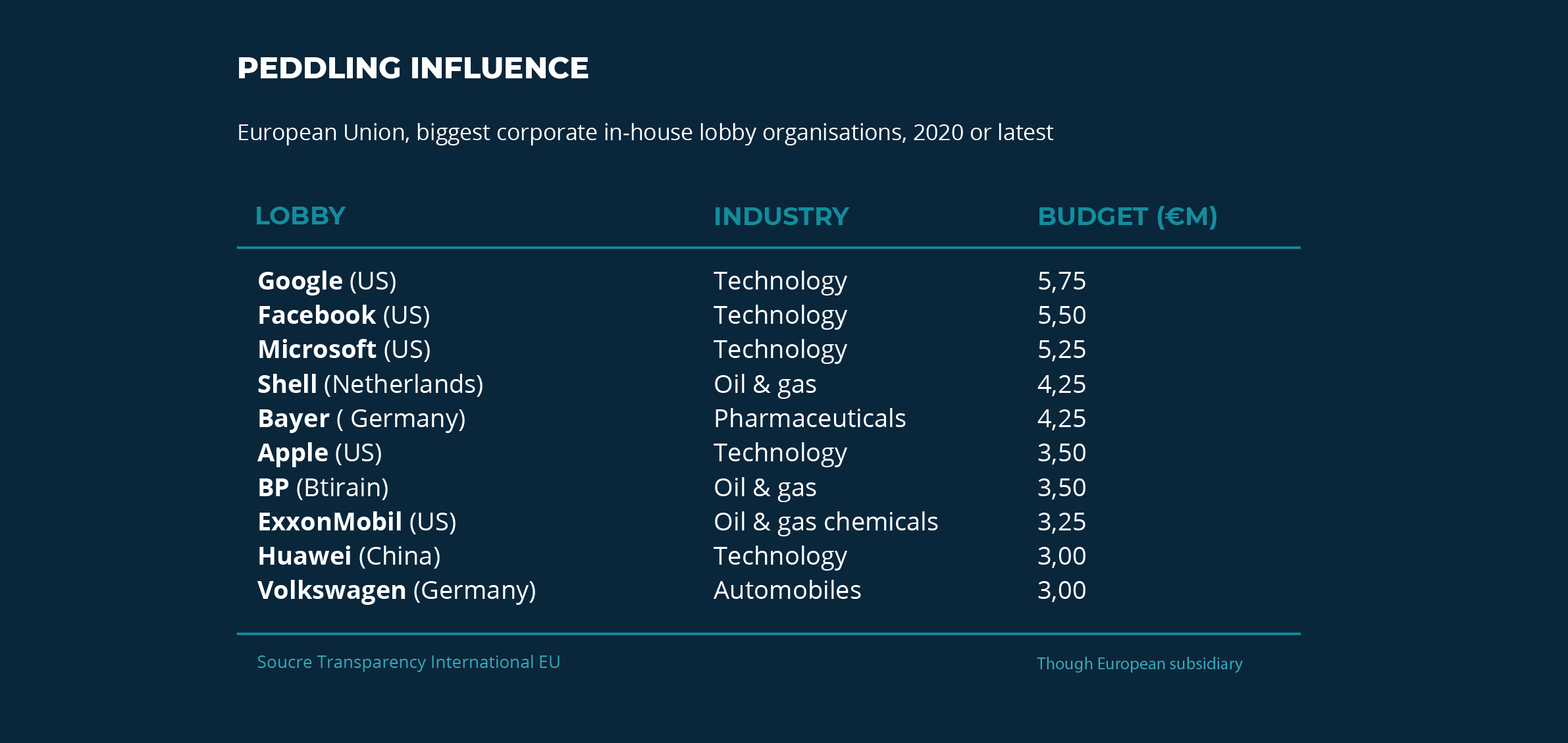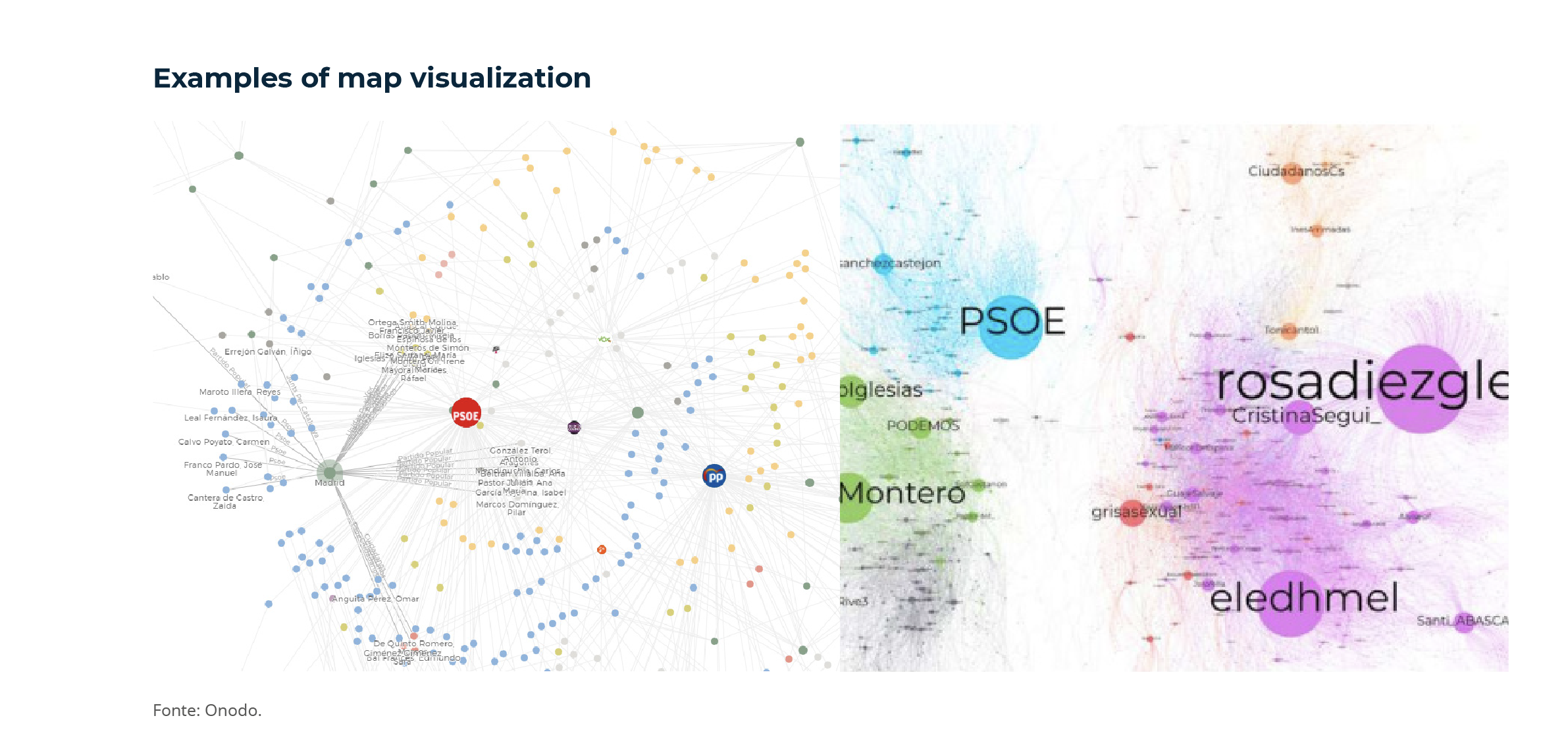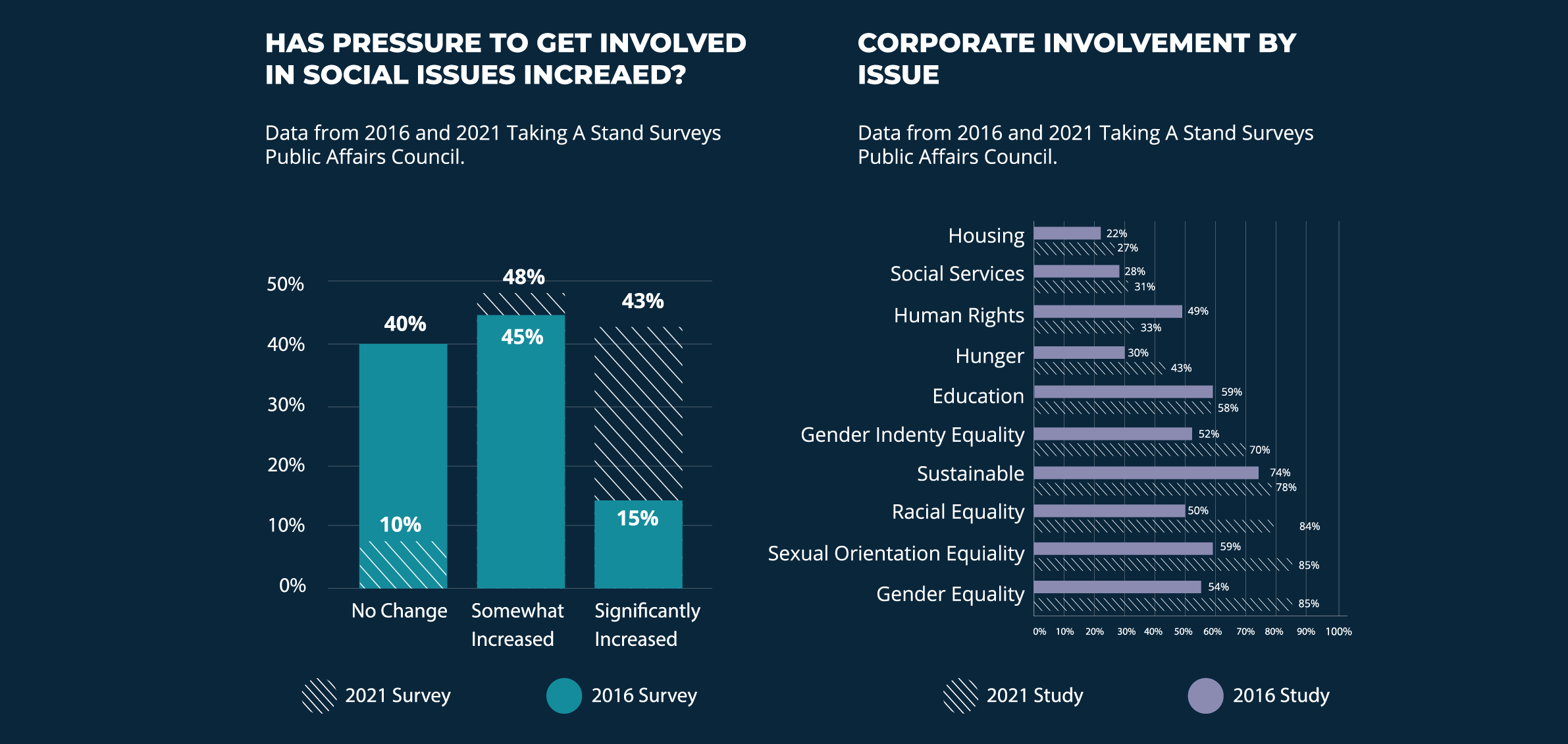-
TrendsEuropean AffairsLatin AmericaDemocracyPolarization
-
SectorPublic AdministrationInfrastructure, Transportation and Logistics
-
CountriesGlobal
“A good lobbyist is a person who is able to organize the power of others”
Government policies and regulation have an impact on companies. This impact is both direct (on business and reputation) and indirect (on social climate). It is a growing impact that has only been accelerated by the pandemic because it pits governments and companies against one another in the difficult task of avoiding collapse (back in March 2020) and rebuilding the economic, regulatory and social foundations of the system. That’s where we are at now.
The way in which the public and private sectors – governments and companies – interact and the new keys to that relationship is the subject of this report, which calls on CEOs, warns public affairs directors and involves all other corporate departments (communication, marketing and regulatory) in one of the greatest challenges for companies in the years ahead: managing their influence on (government) policies and regulation.
In 2013, McKinsey estimated that interventions by governments and regulation accounted for some 30% of company profits (around 50% in the banking sector). It was therefore calculated that European regulation, for example, could potentially account for some 1.5 billion euros at a service company. Since then, company awareness about the scope of this impact has steadily increased to such an extent that we can now talk about a blossoming public affairs or professional lobbying industry, this being understood as the legitimate actions undertaken by a company to manage its influence on the public agenda (based on win-win goals). The OECD has stated that “lobbying can provide decision-makers with valuable insight and data, as well as facilitate stakeholders’ access to the development and implementation of public policies”.


The general framework for this project could be summarized as follows: the major consensuses of the mid-20th Century have been broken and the power of companies is on the rise, as is the inability of States to make decisions (climate change, digital governance or immigration, among others) in a non-linear, fragile, incomprehensible and unsettled situation. Within this transformational context, traditional lobbying can be clearly seen as inefficient and made worse by certain movements that are emerging in the decision-making environment (regulator), the social environment and companies (regulated parties).
MORE REGULATION IN A LESS STABLE ENVIRONMENT
On 20 November, The Economist published an analysis entitled The Triumph of Big Government in which it observed a trend by governments to grow or expand as a “hallmark of modernity”. This attracted media attention because it was also happening in countries that had historically defended a steady reduction of State power or control, such as the United States of America.
That growth by the State has brought with it greater State powers and increased regulation. “The growth of public spending is usually accompanied by growth in what States do”, said the international magazine, “and their control over what others do. In the United States, the number of federal rules has more than doubled since 1970. The total number of words in German laws is now 60% higher than in the mid-1990s”. Government action is expected to become increasingly more compulsive. In Spain, for example, we are witnessing extraordinary extensions to the periods of session in Parliament and a year-end that was characterized by two weekly meetings of the Council of Ministers (Cabinet).
This increased compulsiveness will be fed by new realities requiring certain ground rules (AI, crypto-currencies, etc.) and the spread of digitalization in all sectors of the economy. A new consensus (‘social contract’, in European terms) that has yet to be agreed, on which new operating licenses and their rules will depend.
“Se espera que la acción de gobierno sea cada vez más compulsiva”
However, government action has become a radical competitive space: increased regulatory demand in shorter and more complex terms of office. That new consensus must be reached amid far-reaching political, economic, social and human instability that could be described as:
- ‘Quick-win’ terms of office
We are living with minority governments that stay in office for increasingly shorter periods and do so under constant threat, meaning that governing parties strive to make short-term positive impacts capable of improving their results vis-à-vis future elections. This leads to a constant sensation of political campaigning and enormous superficiality in government action (which produces a constant feeling of regulatory temporariness). There is no capacity for medium-term planning because several terms of office are needed for that and… well, who knows?
- Wave of ‘devilish problems’
We understand ‘devilish problems’ as those of such technical, technological and social complexity that they challenge existing knowledge and the existing regulatory framework (of course, they also challenge the aforementioned ‘quick-win’ terms of office). Their management requires: 1) different levels of jurisdiction with no clear boundaries (from the European Union to central government, regional governments and/or local council authorities); and 2) collaboration from the private sector on education and legislative co-creation (which is another twist for the role of companies in their relations with the public sector). More and more of these problems will arise in the future. They include such issues as the fight against climate change, immigration policy, governance of the digital economy and the pandemic.
The fact is that, faced with apparently overwhelmed public authorities, part of the responsibility for the social model currently being built will fall on the work undertaken by companies and sectors. Any company that can embrace a medium-term outlook is able to steer an aspirational model of society, whether through technical solutions to our challenges or to the new demands for use and consumption, thereby minimizing the paroxysm from public authorities and facilitating decision-making.
This situation requires the professionalization of the actions taken by companies with regard to their relationship with the public sector through public affairs teams capable of offering business insight for regulation and reducing the widening gap between innovation and regulation. If, as we said at the start, traditional lobbying is seen to be somewhat inefficient in this complex situation that we have described, what are the keys to the new form of lobbying? To answer that question, we have based ourselves on a series of discussion groups and in-depth interviews with public affairs executives in partnership with the sociological analysis consultancy firm Peel the Onion. Our goal was to reveal the direction of this trend and companies as political players.

PUBLIC AFFAIRS AT COMPANIES
The initial conclusions from the analysis help us to understand the challenges being faced by the public affairs departments of companies. The fact is that public affairs are not understood or appreciated by many boards of directors. There is a lack of education, measurement and professionalization, even in those cases where such departments exist on an ad hoc basis.
If regulation is a strategic issue for the company, its public affairs strategy must fall to the highest executive at the company and its implementation must form part of its steering committees. This is not something that occurs often.
Public affairs are strategic because regulation defines the core business of the company (whether it operates or not and under what rules, for example) and the social standard of the time (values, beliefs and aspirations). This is a moral and political outlook from the company that needs to be managed. It exists, whether or not the company wants it to, whether or not the company manages it, through action or omission. That lends outstanding weight to the public affairs strategy because it connects values, beliefs and aspirations to the ground rules that make them possible, seeking opportunities and certainty for the business.
Hence, the business, public affairs, communication and marketing goals of a company must all be the same. Like the song by Leonard Bernstein for West Side Story: “make of our hands one hand, make of our hearts one heart”. We should therefore be seeing the end of stagnant departments and the end of overwhelmed departments. Specific techniques and specialization are increasingly more important, more difficult to achieve and more inefficient on their own.
Professionals in this field warn that the risk of failing to take action in this direction means that the work of public affairs departments will become merely technical, of a consultancy or supporting nature only, but unable to manage the context in which other departments (business, communication or marketing) will need to operate.
All the above, as well as what follows, will depend on whether we are talking about public affairs teams for companies in emerging sectors (the new ones) or sectors undergoing transformation (the traditional ones), at B2B companies (with public affairs that are more sensitive to business and legal issues) or at B2C companies (with public affairs that are more sensitive to communication and marketing issues). Naturally, whether the company is regulated or not to begin with will also be relevant.
THE ROLE OF PUBLIC AFFAIRS CONSULTANTS
Hence the role of public affairs consultants. The professionals we asked all agree that the role of these professionals involves raising their standards of specialization and pro-activity, helping companies boost anticipation, transversality and innovation. They agree that this would be the path that turns a consultancy firm into a source of technical or strategic support.
This can be seen in the European Union Next Generation Funds, which have opened a new dimension at consultancy firms by definitively connecting public affairs and business, making them speak the same language.
“El objetivo de negocio, de asuntos públicos de comunicación y de marketing de una compañía han de ser el mismo”
TRENDS IN PUBLIC AFFAIRS
Above all, a public affairs professional is a manager of contexts and someone able to organize and mobilize the power of others (within and beyond the company itself) to obtain a regulatory goal capable of offering opportunities and certainty in business.
Despite the inefficiencies observed in traditional lobbying strategies, certain inseparable parts of this activity remain entirely applicable. Of those areas where “nothing changes”, we would highlight the following:
- The commodity used in lobbying is still information.
- Lobbying activity still needs to manage the influence and relevance of the company within the regulatory and public policies environment.
- Lobbying activity still requires a high level of specialty and knowledge on decision-making processes and the rules of politics.
- There is still a need for direct dialogue with the decision-maker and for an exchange of positions and technical alternatives (arguments for and against, for example) to regulatory developments.
- There are still three key moments for the lobbyist:
- anticipation;
- strategy and management; and
The channels and formats are where the changes are happening. A trial and error process is under way to define the new boundaries for this activity. However, there is a clear commitment to increasingly more cross-cutting strategies (indirect lobbying) with greater support from communication, marketing and even advertising techniques, thereby hybridizing the teams involved.
INTELLIGENCE
Technology is improving the diagnostic capabilities of public affairs teams above all else. In the next two or three years, the public affairs strategy will organically weave technologically into its fabric and enable companies to arrive earlier, better predict regulatory risk scenarios and know more. Investment is the greatest barrier to entry for this, meaning that consultancy firms will be the first to incorporate these capabilities followed by companies later on. The dilemma is complex, because clients are not willing to pay for that technology today but will not accept the continued outsourcing of strategies based on intuition. All the progress made in these areas will help boost corporate interest in and the usefulness of public affairs activity at companies.
To begin with two areas in which work is already being done, we would highlight the following:
- Data-driven lobbying
Technology has come to the management of public affairs. It has done so in several ways but with a clear common purpose focused on the anticipation of scenarios (arriving earlier). The incorporation of Deep Learning and Big Data offers possibilities that were inconceivable before, both from the perspective of anticipating issues and from an electoral point of view.
- Data visualization and scenario maps
Technology is also helping to visualize complex information by generating maps, scenarios and predictions that facilitate the comprehension of complex issues and decision-making.

ESTRATEGY AND EXECUTION. INDIRECT LOBBYING
As stated above, traditional lobbying is being increasingly accompanied by indirect lobbying in an attempt to tackle the complexity of the political context and to lend greater impact, understanding and acceleration to the strategy. The leverage for indirect lobbying mainly lies in public opinion, published opinion and expert opinion, usually subject to partnerships and emotions, whereas direct lobbying is mainly and almost always rational. Hence the interest in adding communication, marketing and advertising techniques to the strategy.
The main indirect lobbying tactics that we are starting to see are:
- From the association to the hub
Contributing to a strong and solid associative environment is a key part of lobbying activity by companies, but it is not enough on its own. With some obvious exceptions, this has no doubt been boosted by associative bureaucracy, growing polarization, the lack of resources and the slow decision-making that has characterized a large number of traditional associations. This has opened the door to a certain degree of de-institutionalization that enables fewer operators to band together, most of the time informally. They need not be from the same sector but they do often share a common concern for a cause and resources for targeting their lobbying activities. We are seeing this with the European Union Next Generation Funds, both in the listening stage and now in the management stage, and they are usually mono-causal in nature.
- Thought Leadership
As stated earlier in this report, one of the barriers to political decision-making is knowledge and even understanding of the new phenomena resulting from innovation and science or from the unforeseen (COVID-19). Companies are investing in knowledge with a goal of sharing that with the legislator. That aside, companies are also investing in the creation of research spaces and forums for debate between players that occupy distant positions on the same issue in order to define negotiated positions capable of providing a certain degree of consensus that public powers seem unable to produce on their own. This is another clear example of the win-win concept because the more information and understanding that the decision-maker has about a certain issue, the more willing they will be to regulate that issue and the better any resulting regulation will be.
A whole host of activities must play a part in this, ranging from training to communication and even mediation. All of them lead to efforts aimed at making decisions viable and at greater knowledge about the reality awaiting regulation.
Sandboxes and spaces for self- and co-regulation are one unexpected result from this process. However, they do not seem to be taking off in Spain and Latin America, unlike the situation in some US states and northern Europe. One example of self-regulation featured Mastercard and was reported on by The Economist in an article entitled Plastic policemen. Financial firms are becoming reluctant regulators of the internet. In this regard, the most ambitious examples emerging in Europe involve the development of pilot schemes in which territories are almost always competing to be chosen as the location for the pilot project. It is perhaps in the financial field (because this already has its own legislation) and in the field of micro-mobility where such initiatives can be seen most clearly.
- Campaign lobbying. From purpose to activism
Many companies are starting to approach issues with a “campaign” mentality. This campaign lobbying can be mostly seen at digital economy companies (mainly platforms) but it is a way for all other companies to seek new influence formulas. It is used:
- for issues with a direct impact on the business and reputation (operating licenses and their rules), using inbound marketing techniques, grassroots techniques, etc.;
- with a focus on the new ESG requirements; or
- by exploring Corporate Political Responsibility (Lobbying for Good), which we understand as the active and voluntary contribution made by companies to formulate public policies capable of improving public well-being and protecting their rights.
Regarding the latter, there is a recent report by the Public Affairs Council that makes a comparison between the weight of social issues on the management of lobbying at US companies between 2016 and 2021. The trend in this area is interesting to observe.

- Diplomacy and Geopolitics
Finally, a growing trend can be seen in terms of strategy and management to integrate international issues and geopolitics. Obviously, the more internationalized the business is, the more relevant these issues become. The interesting thing is that this began as an exercise in intelligence (monitoring major political and regulatory trends) and has become more an issue of management. This is partly due to the ‘devilish problems’ we mentioned earlier, which mostly escape State control, and also partly due to the energy scope of geopolitical movements, which stress the financial forecasts of major operators and industries. We saw this in 2021 with gas supplies and we will continue to see it in many other issues amid a process of global de-governance because the institutions created in the mid-20th Century have fallen victim to the same thing as the consensus they created: they are broken. Hence the weight being taken on by such private initiatives as Davos and other more informal initiatives that bring together executives from major companies to identify significant trends, risks and opportunities in the future.
MEASUREMENT
One of the trends that might decide any future “survival” is that related to measuring the impact of public affairs. This is a pending issue that has gained importance alongside the activity itself. We could say that the activity has become professionalized over the last 10-15 years and, now that the process is pretty much complete, another stage is beginning in which this activity is forging a place for itself in the business world: its own accountability.
Within a competitive environment, those departments that wish to see their resources and internal influence increase will need to be able to measure what they bring to the table in terms of business and reputation for their company.
- Toward a KPI model
A number of recent reports exist on this topic that can help draw a picture of the situation. We would highlight Best in Brusels.eu, from which the table below was taken, and the one conducted by Political Intelligence with Corporate Excellence. Some interesting initiatives are starting to emerge for modeling the impact of public affairs on companies and this will no doubt be a turning point for this activity.

BONUS TRACK. SHADOW, DOUBT, WARNING
There is also room for shadow, doubt and warning within the topic of lobbying trends.
SHADOW. FAKE LOBBYING
These dark “shadows” include fake lobbying, which harnesses the power of technology and social media to generate confusion and falsify reality or illegitimately alter the opinion climate on pending regulatory decisions. Such campaigns are worrying and should be the subject of attention and reporting by the sector. Whereas fake news seeks to mislead us all, fake lobbying seeks to mislead the politician. In fact, the expression of falsehoods contrary to scientific evidence are starting to be seen in parliaments that would not stand up to even the lowest level of fact checking. The launch of the Science and Technology Office of the Spanish Lower House of Parliament following a drive by Science in Parliament will need to work against this fallout that jeopardizes trust in our institutions.
DOUBT. FROM INFLUENCE TO INFLUENCER
The use of social media by politicians has also led companies to seek notoriety in these channels and endorsement from some of the causes they defend. This trend takes us from influence to influencer and, like everything, brings positives and negatives to the table. When done well, it can boost the cause no end. When done poorly, it can be an example of confusing media and purposes, making light of a relationship (that of the company with the political class) that should be nurtured and respected.
WARNING: E-LOBBYING
In line with the above, there is a final warning to be heeded around the new possibilities brought by the pandemic for the development of e-lobbying. The pandemic brought new ways for us to interact, helping and expediting dialogue processes, but relational informality was another by-product (widespread use of WhatsApp, the breakdown of basic conversation protocols, etc.). The right balance will also need to be found between the possibilities uncovered and the necessary rigor surrounding the relationship.
CONCLUSION
In this report, we have briefly looked at some of the trends we are starting to see in the field of lobbying. Technology, transversality, specialization, indirect lobbying and measurement are the cornerstones underpinning the new influence market, potentially leading to a golden age for this activity. For that to happen, we will need cooperation from governments and commitment to transparency and rigor from the private sector. The Economist explained this in its article entitled Making Money and Influencing People: “Most interest groups or stakeholders are a legitimate, even necessary, part of the democratic process to balance competing interests when drawing up policies. But greater transparency will do wonders for the reputation of a profession that is often dragged through the mud”. This warning, which is neither new nor trivial, is one we should heed in order to properly harness the possibilities offered to us by breaching the frontiers of specialization and technology



